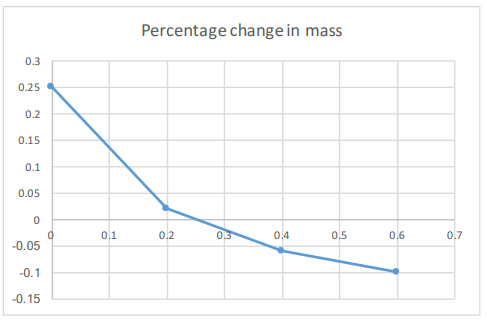Transport in Cells - Measuring the Effects of Osmosis (GCSE Biology)
What is Osmosis in Biology?
Osmosis is the movement of a solvent (like water) through a semipermeable membrane. This solvent travels from a high concentration solution into a solution with a lower concentration.
Investigating the Effects of Osmosis
Osmosis in Living Systems
You can carry out a practical using potato cylinders and sugar solutions of different concentrations to investigate the effects of osmosis:
- First, cut potato cylinders of the same size from the same potato. Using a cork borer may help to cut the pieces so they are all the same size of roughly 1cm in diameter.
- Place the potato cylinders on some tissue paper and pat them dry. This removes the excess fluid.
- Then, prepare different concentrations of sucrose solution in different beakers. This can be from pure water (low concentration) to a heavily concentrated solution. Make sure the volume of the solutions is the same.
- Separate the potato pieces into groups of 3 and measure the mass of each group to get the initial mass and record.
- Then in each sucrose solution, place one group of potatoes (3 potato pieces) at the same time. Leave the potatoes in the solutions for the same amount of time for about 45 minutes.
- Carefully remove the potato pieces from the solutions. Place them on a paper towel and pat them dry to remove the excess fluid.
- Weigh each group of potatoes to get their final masses and
record. - Then you can interpret your results. You can do this by calculating the percentage change of mass of each group of potatoes using their initial masses (before being placed in the sucrose solution) and final masses (after being placed in the sucrose solution.
Calculations
- Measuring rate of water uptake. Again we must remember that rate is a change divided by the time period. Therefore, if you have an apple that has an initial mass of 50g and a mass of 62g after 30 minutes, you work out the changes as 12/30 = 0.4g/minute. If you want to work out the change in mass per hour, you must change your calculation slightly. The time period is then 60/40. So you then multiple 12 by 60/40. This will give you a value of 18g/hour.
- Percentages. Percentages can be used to easily compare values from the start and finish of osmosis. You can get a value for the percentage change in mass of an object. This will allow you to then compare values between different specimens. In order to calculate this, you must take the mass at the end, then subtract it from the original mass. Then divide this value by the original mass. To get the percentage, you must then multiply it by 100.
Using the above data, the percentage change would be:
(62-50)/50 x 100. This gives you 24%
- Percentages 2. If you get a negative value, this is a percentage loss, if you get a positive value, it is a percentage gain.
You must be able to plot graphs using such data.

of Osmosis
If we take this graph, with concentration of sucrose on the x axis and percentage change in mass on the y axis, we can see how the concentration affects the change in mass.
The point at which the graph cross the x axis, is the value for the sucrose concentration that is equal to the concentration of dissolved substances in the cells of the object. Here, there will be no more concentration gradient and so there will be no osmosis. After this point, the concentration is greater outside the cell, so water exits the cell via osmosis.
Osmosis in Non-Living Systems
Visking tube has a partially permeable membrane and can be used to observe osmosis by doing the following:
- Prepare a beaker with pure water.
- Prepare a visking tube attached to a capillary tube and pour some sugar solution into the visking tube. Measure where the sugar solution comes up to on the capillary tube.
- Place the visking tube and capillary tube into the beaker of water with the visking tube submerged in the water. Leave the apparatus overnight.
- You will observe that the level of the solution in the visking tube and capillary tube has risen. This is because water has moved by osmosis from the beaker through the partially permeable membrane of the visking tube into the tube.
Transport in cells refers to the movement of substances, such as water, ions, and molecules, into and out of cells. This process is essential for maintaining the health and function of cells.
Osmosis is the movement of water molecules from an area of high concentration to an area of low concentration through a semi-permeable membrane. This process helps maintain proper fluid balance in cells and is an important part of transport in cells.
The effects of osmosis can be measured by observing changes in weight, volume, or length of a cell or tissue in response to changes in the concentration of a solution surrounding it.
There are two main types of osmosis: isotonic and hypotonic. In isotonic osmosis, the concentration of solutes on both sides of the semi-permeable membrane is equal, so there is no net movement of water. In hypotonic osmosis, the concentration of solutes outside the cell is lower, so water moves into the cell, causing it to swell.
Osmosis plays a critical role in the maintenance of cell shape and function because it helps regulate the balance of water and solutes inside and outside the cell. If there is an imbalance in this balance, it can lead to changes in cell shape and function, which can have negative impacts on overall cell health.
Plasmolysed cells are cells that have lost water due to osmosis and have become shrunken and wrinkled. Turgid cells are cells that have taken up water due to osmosis and are firm and swollen.
The concentration gradient affects the rate of osmosis because the greater the difference in solute concentration between the two sides of the semi-permeable membrane, the greater the rate of osmosis will be.
Yes, the process of osmosis can be reversed by changing the concentration gradient, such as by increasing the solute concentration outside the cell, which will cause water to move out of the cell.






Still got a question? Leave a comment
Leave a comment